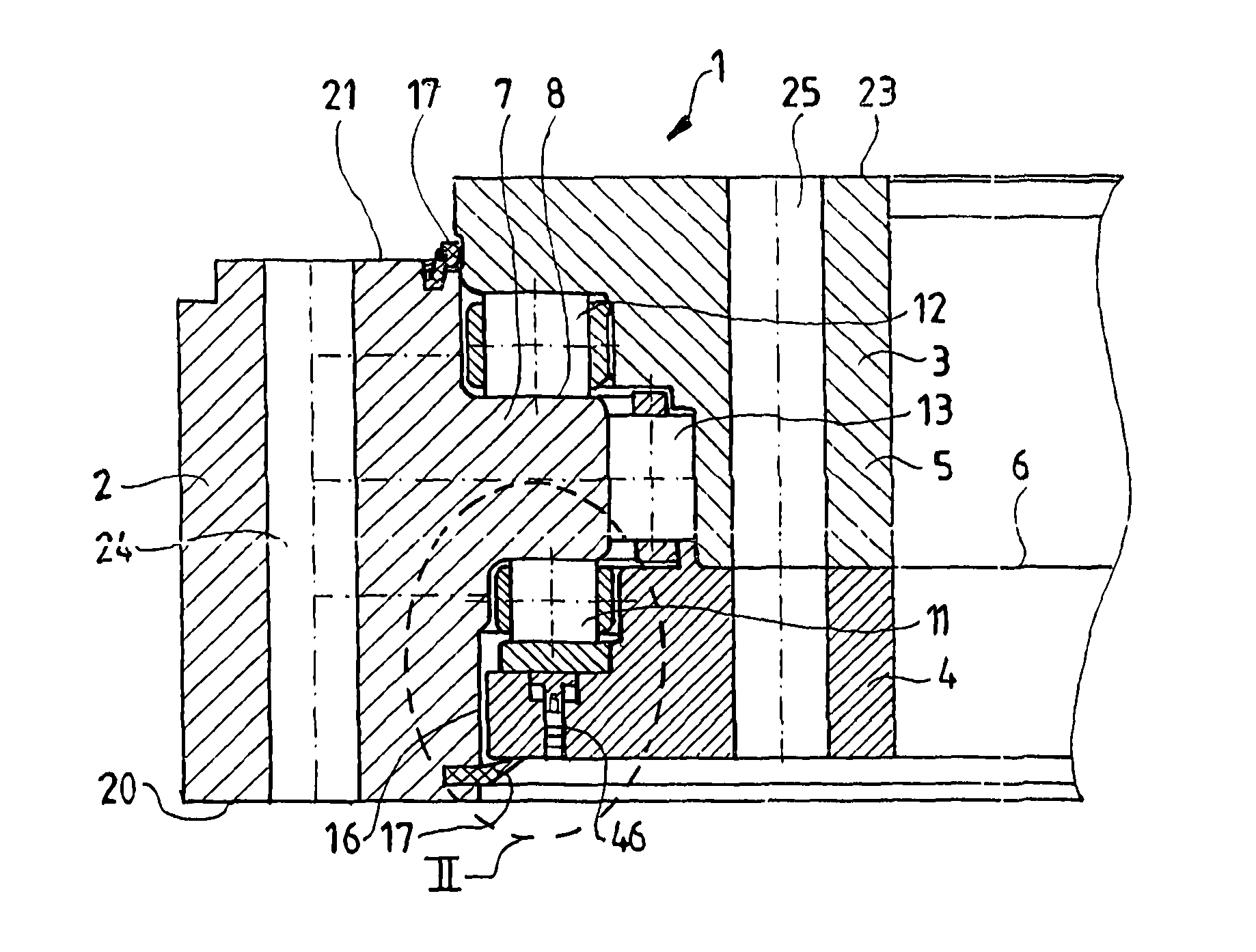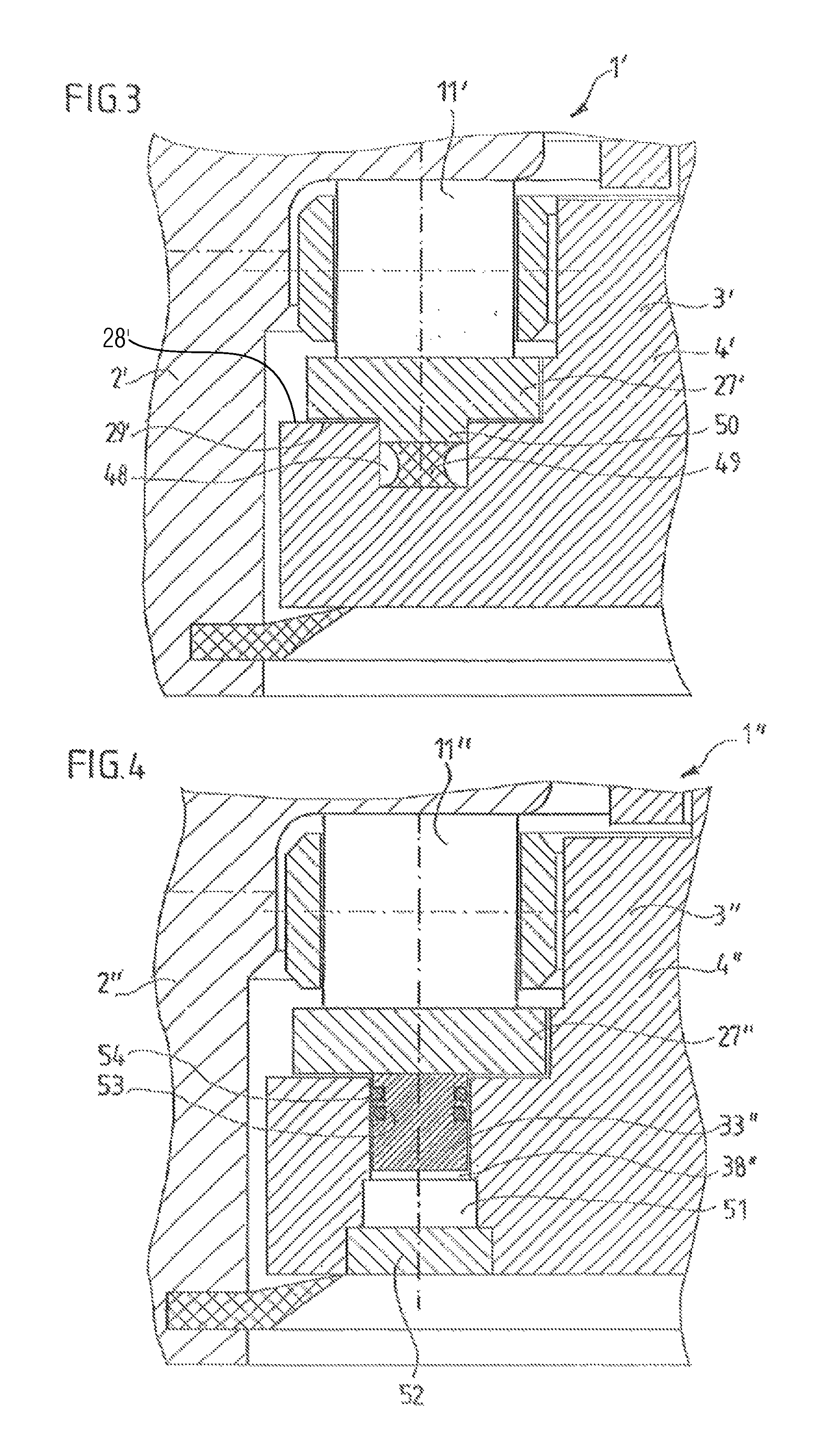Rotor bearing for a wind power generating plant
a technology of rotating bearings and wind power generating plants, which is applied in the direction of elastic bearings, machines/engines, rigid support of bearing units, etc., can solve the problems of undesirably high biases in the axial rows, the axial clearance of triple-row roller bearings is relatively narrow, and the axial clearance of roller bearings is much more sensitive than that of ball bearings, etc., to achieve advantageous effect on the smooth operation of bearings and reduce the hardness gap
- Summary
- Abstract
- Description
- Claims
- Application Information
AI Technical Summary
Benefits of technology
Problems solved by technology
Method used
Image
Examples
Embodiment Construction
[0039]FIG. 1 is a section taken transversely through an annular rolling bearing 1 according to the invention. This is a large rolling bearing, of the kind used, for example, in wind power generating plants, for example as the rotor bearing or main bearing thereof. Clearly, similar designs could also be used for other purposes: for example, as the blade bearings or the yaw or nacelle bearing of a wind power generating plant.
[0040]In the case illustrated, the viewer will recognize an outer ring 2 configured as a nose ring and, disposed concentrically therein, an inner ring 3, which is preferably divided into two subrings 4, 5 abutting each other along a plane 6. The ring 3 formed by these adjoining subrings 4, 5 has an approximately C-shaped cross section and surrounds the nose or a circumferential flange 7 of the nose ring 2 on the top and bottom surfaces 8, 9 thereof with a gap 10, such that the two rings 2, 3 can be rotated in mutually opposite directions.
[0041]In the exemplary emb...
PUM
 Login to View More
Login to View More Abstract
Description
Claims
Application Information
 Login to View More
Login to View More - R&D
- Intellectual Property
- Life Sciences
- Materials
- Tech Scout
- Unparalleled Data Quality
- Higher Quality Content
- 60% Fewer Hallucinations
Browse by: Latest US Patents, China's latest patents, Technical Efficacy Thesaurus, Application Domain, Technology Topic, Popular Technical Reports.
© 2025 PatSnap. All rights reserved.Legal|Privacy policy|Modern Slavery Act Transparency Statement|Sitemap|About US| Contact US: help@patsnap.com



